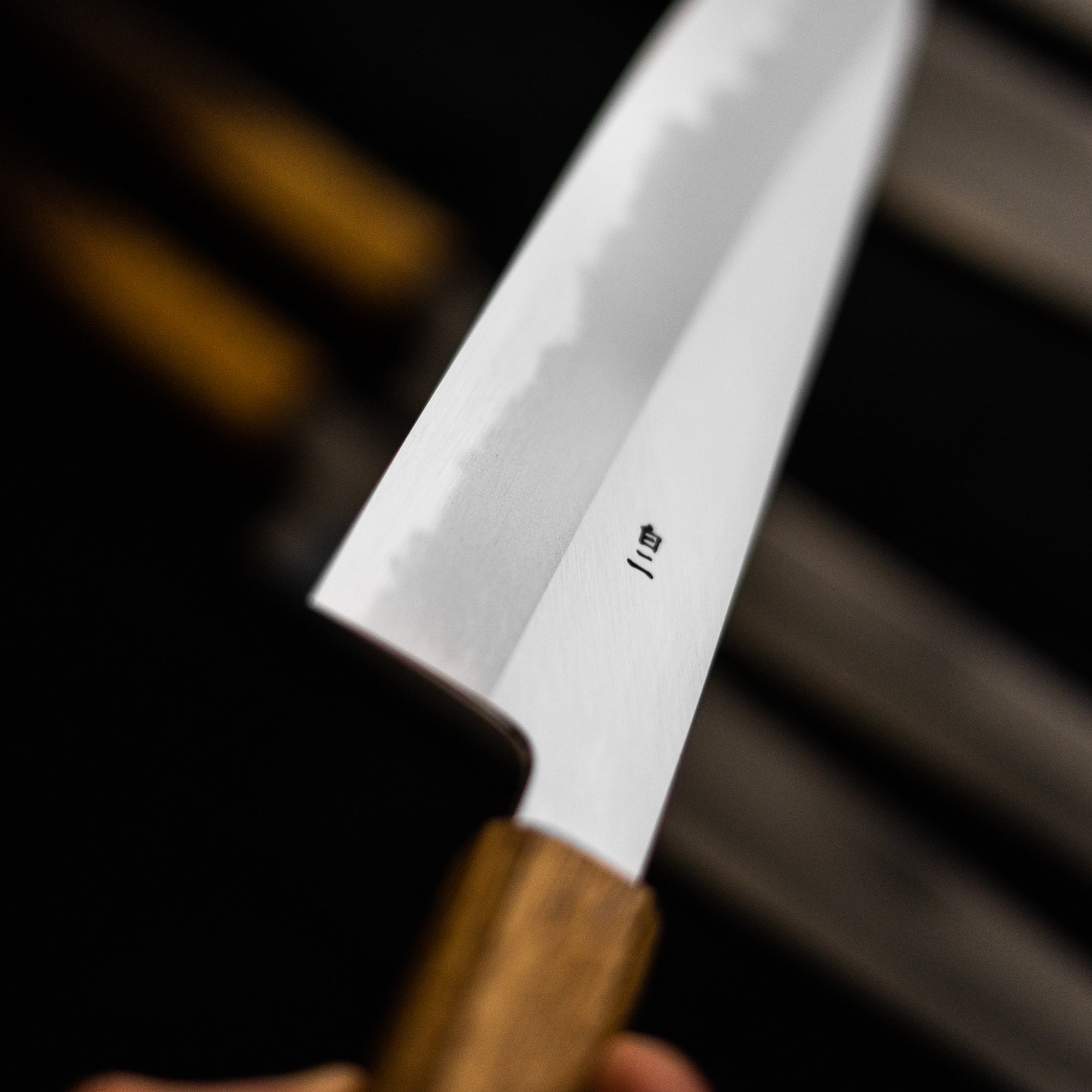
What is the Rockwell Hardness Scale and why does it matter?
The Rockwell Hardness Scale is used to measure how hard a knife is. It works by applying a diamond point to the steel with a specified degree of weight and then measuring the size of the mark created. On a basic level, we can say the smaller the mark, the harder the steel blade. This method of testing dates back to the early 20th century and it’s been a measure of blade hardness ever since. Let's take a closer look at how the scale works below.
How is the Rockwell Hardness Scale used?
The Rockwell Hardness Scale (HRC) test is carried out by applying force to a cone-shaped piece of diamond. This happens twice, with the degree of force being increased. The degree of indentation is recorded each time and the difference between the two numbers gives us the HRC number. This number is then used to compare the hardness of different knife blades and can be useful when it comes to choosing your new kitchen knives.
What HRC number should I look for when I’m choosing kitchen knives?
As a guide, you should look for a kitchen knife with an HRC rating that is above 54. A knife with this rating will not be the best quality, but it will be adequate for general use. If you can, it’s worth making an investment and buying a kitchen knife with an HRC rating of at least 55. Some of the best knives have an HRC rating of up to 64. A HRC of 55 means the knife steel is soft, and will blunt fairly quickly. Most Japanese knives will have a HRC of at least 58-59.
So the higher the number, the better the knife, right?
It’s easy to come to that conclusion. In reality, if the HRC number goes, the harder your knife steel is, meaning a longer lasting edge. However, once we get up to HRC of 63 or above, the hardness will result in a level of fragility in the blade, which will require some care and attention with your cutting technique, as knives this hard can chip easier if they are ground thin at the edge.
How to use HRC when you choose your kitchen knife
Using the Rockwell Hardness Scale is a good way to find balance when it comes to your knife choice. It stands to reason that an object cannot be hard and flexible all at once – yet that is what we often seek in the ideal knife. The skill of the knifemaker lies in crafting something that balances both hardness and flexibility to maximise function. They will usually incorporate other elements in their knives, such as carbon, manganese or vanadium, to achieve this.
Generally speaking, the trade-off for hardness is as follows: Low HRC - Softer steel, lower edge retention, better durability and can be treated in a rougher manner, for example butchery knives. High HRC - harder steel, better edge retention, at the cost of some fragility, cannot be treated roughly.
Chef’s choice
If a chef is looking for a super thin blade that offers a fine, sharp cutting edge, then a knife with a high number on the Rockwell Hardness Scale such 62-64 will be the best option. It’s essential to bear in mind, however, that this type of blade will require more in the way of care. You cannot be rough or apply any torque to any blade that is thin at the edge with a high HRC.
Discover the best knife for you
Choosing kitchen knives takes time and it’s easy to find the process a little bewildering. Bear in mind that while understanding things like the Rockwell Hardness Scale is important, there’s no “one size fits all” when it comes to finding your ideal kitchen knife. Ultimately, you need to have a clear idea of how you will be using your knife and any specific tasks you need to be able to do. Once you have a clear picture of what you want from a knife, you can use detailed information such as the Rockwell Hardness Scale to hone your choice.Share
